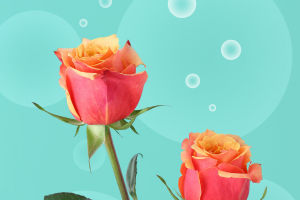Coral is generally used generically to refer to an animal like a coral worm.
But in reality, coral is neither an animal nor a plant, but an abiotic, aggregation of the calcareous skeletons of millions of coral worms.
Coral polyps, which are marine cylindrical spiny-celled animals, are fixed on the sea floor or on rocky surfaces.
The outer walls of the coral polyps' tubular bodies are capable of secreting limestone, which calcifies to form the exoskeleton.
When coral polyps gather together, the limestone they secrete also forms the coral skeleton.
When the old generation of coral polyps die, a new generation of coral polyps are born on their carcasses.
In this way, from generation to generation, millions of coral insect skeletons accumulation makes the coral skeleton also become bigger and bigger, and finally form coral reef or coral island after long years.
According to the appearance characteristics classification: coral usually includes soft coral, willow coral, red coral, stony coral, horn coral, hydroid coral, pale coral and pith coral and so on.
According to the ecological environment and characteristics of stony coral growth classification: and can be divided into reef-building stony coral; non-reef-building stony coral (or deep water stony coral) 2 categories.
Coral generally grow in warm shallow water, this is because the coral polyps are feeding on marine planktonic microorganisms.
Only light, moderate salinity, high water temperature of the sea to gather the coral polyps like plankton.
Coral bugs camp solid life, they can not move freely like fish, so generally can only grow in the warm shallow water in line with the above conditions.
The feeding method of coral is: the tentacles and feathery branches of the hydroids swing back and forth in the seawater with the current.
When the tentacles touch food (small zooplankton), the tentacles and feathery branches of the hydroids swivel quickly to catch the food, bend rapidly inward to deliver the food to the open mouth, and then swallow by the cilia circulating in the mouth and pharynx.
Since the body of coral has only two germ layers inside and outside, and only one mouth at the upper end, food enters through the mouth and food residue is also discharged from the mouth.
The coral growth environment needs to have the following conditions.
1. Water temperature
Coral growth of water temperature is about 20 ~ 30 ° C.
2. Salinity
Reef-building coral growth in the salinity of 27 ~ 40 seawater, the best salinity range is 34 ~ 36.
3. Water depth
Generally speaking, the depth range of reef-building coral is 0~50m, the best depth is 20m to shallow.
4. Light
Is also the need for photosynthesis of bug yellow algae, generally strong tropical light, long time, the average light rate of 50% or more, is conducive to the development of coral reefs.
5. Wind and wind waves
General wind and waves on the side of the reef development is better.
Crescent-shaped and horseshoe-shaped reef body convex surface is facing the wind and waves.
If the wind and waves have seasonal changes, the shape of the reef will appear double horseshoe shape.
So according to the shape of the reef can judge the ancient wind direction.
Too strong wind and waves make it difficult for coral polyps to fix on the substrate and not develop reefs.
6. River
The river into the sea, seawater salinity is low, sediment content, high turbidity, low transparency of seawater, will make the coral suffocation and death.
So there is a lot of sediment into the sea at the mouth of the river generally do not develop shore reef.


